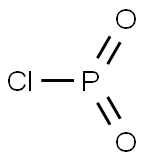
7-CHLORO-2,3-DIHYDRO-[1,4]DIOXINO[2,3-G]QUINOLINE-8-CARBALDEHYDE synthesis
- Product Name:7-CHLORO-2,3-DIHYDRO-[1,4]DIOXINO[2,3-G]QUINOLINE-8-CARBALDEHYDE
- CAS Number:186668-55-3
- Molecular formula:C12H8ClNO3
- Molecular Weight:249.65
Yield:-
Reaction Conditions:
in dichloromethane;water;
Steps:
11.i 11.i.
11.i. (7-iodo-2,3-dihydro[1,4]dioxino[2,3-g]quinolin-8-yl)methanol (N) The procedures described by Meth-Cohn et al., J. Chem. Soc. Perkin Trans. I, p. 1520 (1981); Meth-Cohn, J. Chem. Soc. Perkin Trans. I, p. 2509 (1981); and Nakasimhan et al J. Am. Chem. Soc. 112, p. 4431 (1990), are used. N-(2,3-dihydro-1,4-benzodioxin-6-yl)acetamide (22 g, 113 mmol) is added to the Vilsmeyer reagent obtained by the dropwise addition of phosphoryl oxychloride (71 ml, 0.77 mol) to anhydrous dimethylformamide (23 ml, 0.28 mol), cooled down with a water/ice bath and agitated again for 0.5 hours under an argon atmosphere. The resultant mixture is heated at 75° C. for 16 hours. After cooling down to ambient temperature, the reaction mixture is added to a mixture of ice and water (300 ml) and extracted with dichloromethane (5*200 ml). The combined organic extracts are dried over sodium sulphate, filtered and concentrated. The solid residue is suspended in dichloromethane (20 ml), filtered and dried under reduced pressure, which produces 10 g (35%) of 7-chloro-2,3-dihydro[1,4]dioxino[2,3-g]quinoline-8-carbaldehyde in the form of a yellow solid, m.p. 222-224° C.
References:
US2003/4150,2003,A1

22013-33-8
189 suppliers
$8.00/250mg
![7-CHLORO-2,3-DIHYDRO-[1,4]DIOXINO[2,3-G]QUINOLINE-8-CARBALDEHYDE](/StructureFile/ChemBookStructure5/GIF/CB9104707.gif)
186668-55-3
6 suppliers
$69.00/10mg

